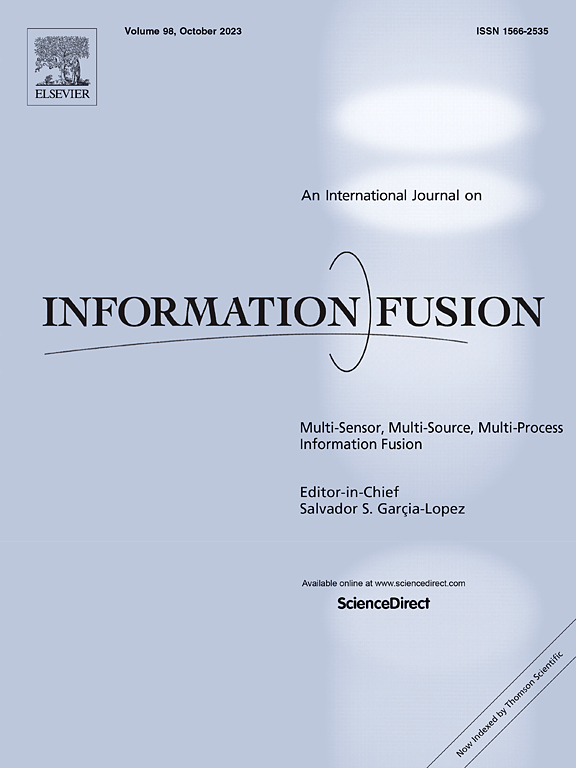大规模约束区域动态勘探-开发平衡的目标多机器人协同源搜索
IF 15.5
1区 计算机科学
Q1 COMPUTER SCIENCE, ARTIFICIAL INTELLIGENCE
引用次数: 0
摘要
快速确定城市地区未知气体泄漏源的位置对于有效的应急反应和减轻影响至关重要。虽然部署自主机器人来评估和定位排放源已被证明是有效的,但目前的方法在大规模、受限的区域是不够的。为了解决这个问题,我们提出了一个面向目标的多机器人协作源搜索(GRASS)框架,用于大规模约束环境。该框架采用三步耦合策略——目标确定、分配和执行——利用后验概率和混合传感信息的融合来实现高效可靠的气源定位。具体来说,目标确定模块定义了两个不同的目标,以动态平衡探索(通过系统覆盖减少估计的不确定性)和开发(通过高斯混合模型将机器人引导到估计的源位置)。此外,目标分配模块适应源估计可靠性和局部环境,使机器人能够在稀疏数据期间优先考虑探索,并随着估计的改善而转向开发。在目标执行方面,通过设计将改进的a *算法与轮廓跟踪方法相结合的自适应路径规划机制,解决了目标追求与避撞之间的冲突。最后,大量的模拟表明,GRASS显著优于两种基线方法,在各种设置下实现更高的成功率(至少增加9%),并且需要更少的搜索时间(至少减少215.95秒)。这些优势也得到了实际案例研究的证实。我们的工作通过为复杂城市环境中的源定位提供自主解决方案,推进了信息融合驱动的弹性城市环境监测。本文章由计算机程序翻译,如有差异,请以英文原文为准。
Goal-oriented multi-robot collaborative source search with dynamic exploration–exploitation balance in large-scale constrained areas
Rapid localization of unknown gas leak sources in urban areas is critical for effective emergency response and impact mitigation. While deploying autonomous robots to assess and localize emission sources has proven effective, current approaches are inadequate in a large-scale, constrained area. To address this, we propose a Goal-oriented multi-Robot collAborative Source Search (GRASS) framework for large-scale constrained environments. This framework employs a three-step coupled strategy—goal determination, allocation, and execution—leveraging the fusion of posterior probabilities and hybrid sensed information to achieve efficient and reliable gas source localization. Specifically, goal determination module defines two distinct goals to dynamically balance exploration (reducing estimation uncertainty through systematic coverage) and exploitation (directing robots toward estimated source locations via Gaussian Mixture Models). Moreover, goal allocation module adapts to source estimation reliability and local context, enabling robots to prioritize exploration during sparse data periods and shift to exploitation as estimations improve. In terms of goal execution, it resolves conflicts between goal pursuit and collision avoidance through designing adaptive path planning mechanisms that integrates a modified A* algorithm with a contour-tracing method. Finally, extensive simulations demonstrate that GRASS significantly outperforms two baseline methods, achieving higher success rates (increasing at least 9%) and requiring less search time (reducing at least 215.95 s) in various settings. These advantages are also confirmed by a real-world case study. Our work advances information fusion-driven environmental monitoring for resilient cities by providing an autonomous solution for source localization in complex urban environments.
求助全文
通过发布文献求助,成功后即可免费获取论文全文。
去求助
来源期刊

Information Fusion
工程技术-计算机:理论方法
CiteScore
33.20
自引率
4.30%
发文量
161
审稿时长
7.9 months
期刊介绍:
Information Fusion serves as a central platform for showcasing advancements in multi-sensor, multi-source, multi-process information fusion, fostering collaboration among diverse disciplines driving its progress. It is the leading outlet for sharing research and development in this field, focusing on architectures, algorithms, and applications. Papers dealing with fundamental theoretical analyses as well as those demonstrating their application to real-world problems will be welcome.
 求助内容:
求助内容: 应助结果提醒方式:
应助结果提醒方式:


